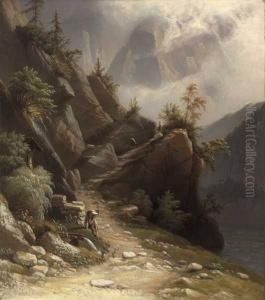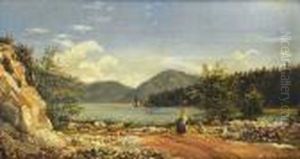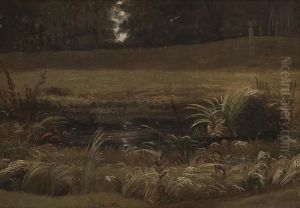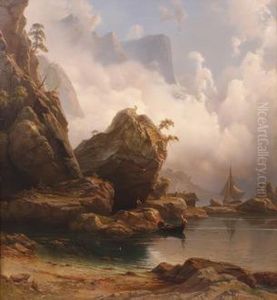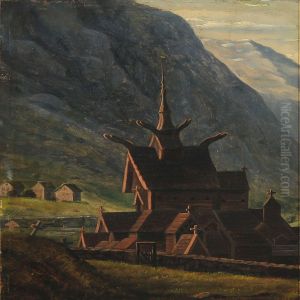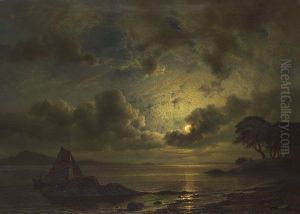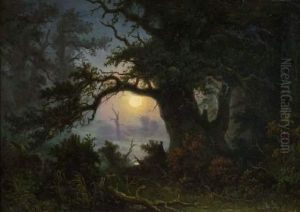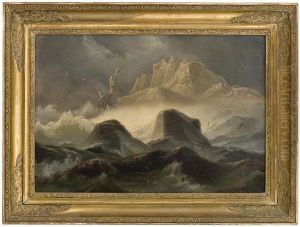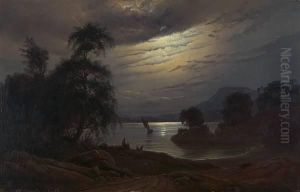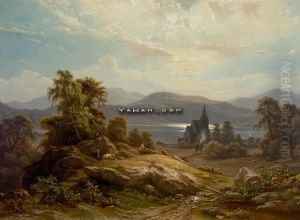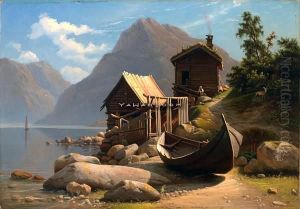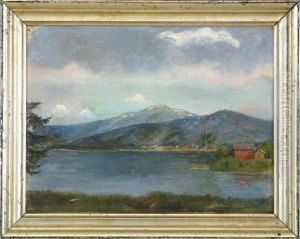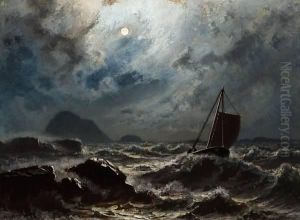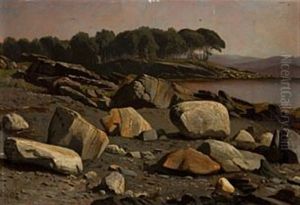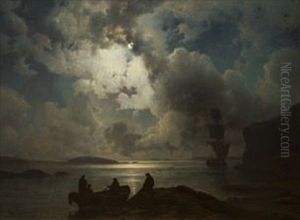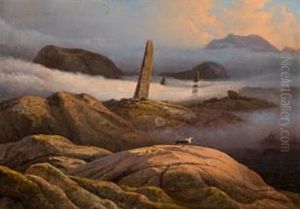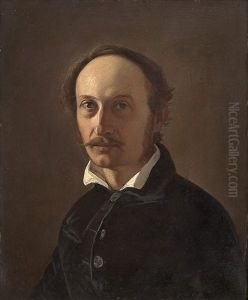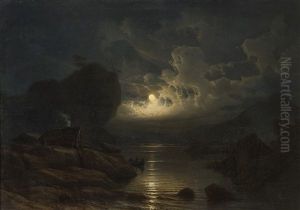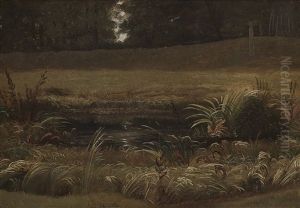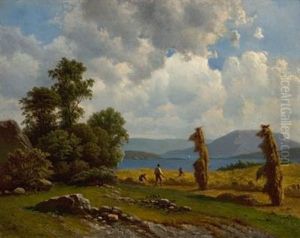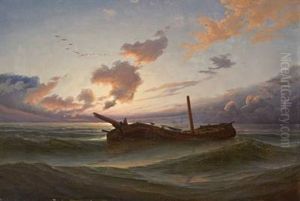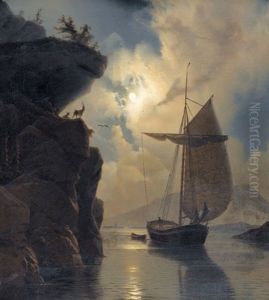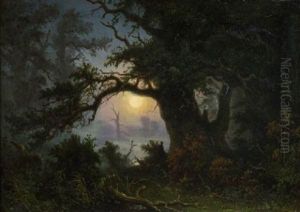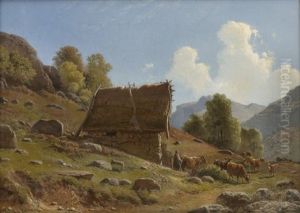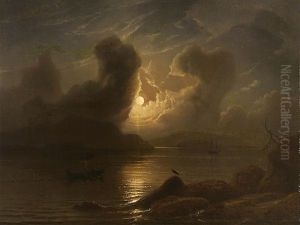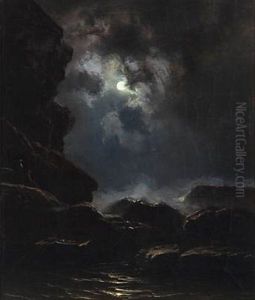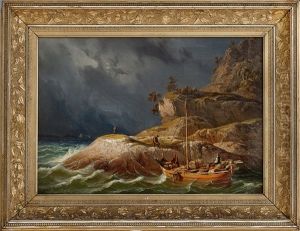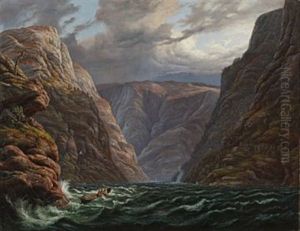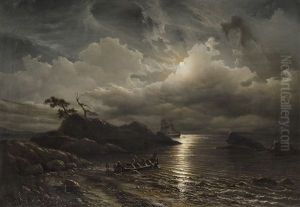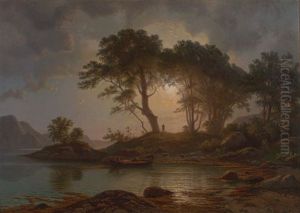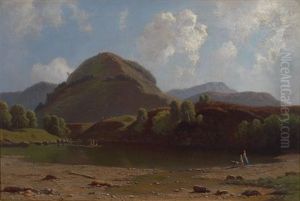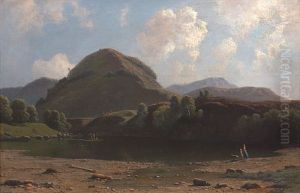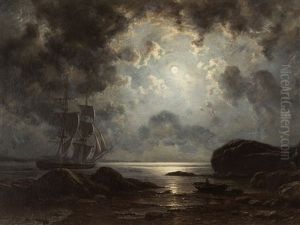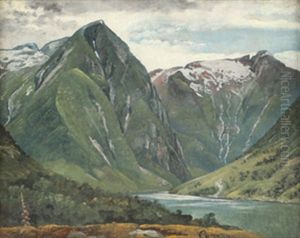Knud Andreassen Baade Paintings
Knud Andreassen Baade was a Norwegian painter born on March 28, 1808, in Skinnarbøl, Norway. Baade’s early life was characterized by a profound interest in art, which led him to pursue his studies at the Royal Danish Academy of Fine Arts in Copenhagen. His education and training there laid the groundwork for his artistic development, focusing initially on figure painting before gradually shifting his interest towards landscapes and marine subjects.
Baade's career took a significant turn when he moved to Düsseldorf in 1837, where he became associated with the Düsseldorf school of painting. This period was crucial for Baade, as he was influenced by the romantic landscapes that the school was famous for, leading him to develop his distinctive style. His works from this period are characterized by dramatic lighting and a romanticized portrayal of nature, often incorporating elements of Norwegian mythology and history, reflecting his deep connection to his Norwegian heritage.
Throughout the 1840s and 1850s, Baade’s reputation as a landscape and marine painter grew, and he became known for his atmospheric nocturnes, which depicted moonlit scenes of the sea and Norwegian landscapes. These works are noted for their moody, dramatic quality and meticulous attention to the effects of light and atmosphere, earning him recognition in art circles across Europe.
Despite his success, Baade's life was not without challenges. He struggled with health issues throughout his life, which affected his productivity and sometimes limited his ability to work. Nonetheless, he continued to produce a significant body of work that contributed to the romantic landscape genre.
Knud Andreassen Baade died on November 24, 1879, in Munich, Germany. His legacy is preserved in the collections of major Norwegian museums, including the National Museum of Art, Architecture and Design in Oslo, where his works continue to be celebrated for their unique contribution to Norwegian romantic art. Baade's influence on the landscape genre and his portrayal of the Norwegian natural and historical landscape have cemented his place in the annals of 19th-century European art.
